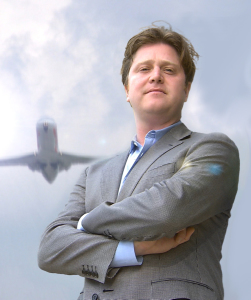 We recently spoke with John Brownstein, Ph.D., co-creator of HealthMap (www.healthmap.org), a global leader in utilizing online informal sources for disease outbreak monitoring and real-time surveillance of emerging public health threats. SciCast partnered with Healthmap and the Discovery Analytics Center at Virginia Tech on a series of questions about the 2014-2105 flu season in the United States. Predict now: https://scicast.org/flu.
We recently spoke with John Brownstein, Ph.D., co-creator of HealthMap (www.healthmap.org), a global leader in utilizing online informal sources for disease outbreak monitoring and real-time surveillance of emerging public health threats. SciCast partnered with Healthmap and the Discovery Analytics Center at Virginia Tech on a series of questions about the 2014-2105 flu season in the United States. Predict now: https://scicast.org/flu.
Dr. Brownstein is an associate professor at Harvard Medical School, Computational Epidemiology Group and the Children’s Hospital Informatics Program. He was trained as an epidemiologist in the Department of Epidemiology and Public Health at Yale University where he received his Ph.D.
He loves the quest to discover things that may have been obvious and overlooked and to uncover reasons for why we are seeing diseases. He spends his free time with his family, including two young children ages 5 and 4, which includes a lot of “kiddie time.” Originally from Canada, it’s not a surprise that he loves skiing and hockey.
Q: Why is forecasting so important in public health?
A: Public health and the function of public health is to be aware of threats to the community and to mitigate threats before they happen; in the past so often the focus was on identification of the risks. At HealthMap, we want to project what may take place and what may ultimately help impact the trajectory of a pathogen.
Q: How did you come up with the idea for HealthMap?
A: I’ve been involved in public health surveillance for 15 years. I thought about the idea of disease risk mapping and forecasting in my Ph.D. work and recognized that to get there we needed better data. So I focused on surveillance systems and ultimately developed HealthMap in 2006, which looks at and maps emerging diseases through informal channels such as social networking sites, blogs, chat rooms, Web searches, local news media and crowdsourcing platforms. These data streams have been credited with decreasing the time between an outbreak and formal recognition of an outbreak, allowing for an expedited response to the public health threat. Collectively, these online sources create an image of global public health that is fundamentally different from the one produced by traditional public health surveillance infrastructure.
Q: Why did you decide to partner with SciCast on the influenza forecasting questions?
A: We’ve been working with Virginia Tech on a number of surveillance projects focused on how you use data for making predictions, so it was natural to partner with SciCast on its efforts to predict the future outcomes of influenza related issues. As part of our overarching collaboration, we hope to use the data streams to better understand emerging trends.
Q: How accurate have HealthMap forecasts been in predicting the timing of outbreaks?
A: We’ve been able to illustrate through many studies that data generated from informal sources can actually tell us something about what is happening in a population. Informal data sources including the news media, crowdsourcing and social media can point to issues and give us head start on what could become a potential health problem.
Q: Do you have any examples?
A: We’ve identified early on many threats from swine flu to Ebola. Some of the first mentions of Ebola were from the news media and in some cases very local media reporting “unusual fever is emerging.” In other cases, we’ve identified major contaminations at restaurants, for example, through Yelp reviews. We report these to the CDC and other government agencies who monitor HealthMap data and determine if it is something that puts the public at risk.
Q: As a researcher what do you think about everyday individuals – non experts - making predications?
A: Engaging citizens who want to participate in predicting outcomes about science is extraordinarily valuable. A lot of our focus and work is on the idea of citizen science. We’ve seen it be of great value – with enough people engaging you can get to a place that is similar to what a group of experts would say. Engaging broad populations in science is an evolving space that is useful and is gaining in credibility.
Q: What’s on the horizon?
A: While there are good models that provide valuable data related to the flu and other diseases, the field of surveillance and forecasting continues to be an active area of research. I think there are multiple dimensions to what’s next – the kind of data we collect, including those wearable sensors and also rapid diagnostic tools that identify pathogens.
Ultimately, we also want to arm consumers with information about infectious disease and provide them with tools that they can use to easily identify risks in their communities. We are excited about a new online tool we launched called http://www.thermia.io/, which serves as a fever calculator and provides caregivers with basic healthcare recommendations.

I can’t speak for other Scicasters, but personally I view the flu questions as an exercise in building a statistical model from ILINet’s own data. I have found very little external news or data that seemed useful for improving the forecast. So really the benefit from Scicast for flu prediction is simple model averaging (each forecaster has his or her own more- or less-formal mental or statistical model).